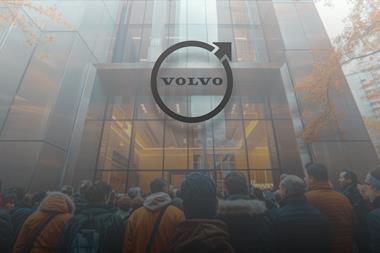 It’s widely believed that there is no such thing as a free lunch. In support of this truism, we can examine the case of Chinese carmaker Geely. Having bought Volvo from Ford in August for about RMB 11.3bn ($1.7bn), the Swedish premium vehicle manufacturer looked to be on considerably firmer ground. Yet a subplot was already developing in relation to the first purchase of an international carmaker by a Chinese national OEM.
It’s widely believed that there is no such thing as a free lunch. In support of this truism, we can examine the case of Chinese carmaker Geely. Having bought Volvo from Ford in August for about RMB 11.3bn ($1.7bn), the Swedish premium vehicle manufacturer looked to be on considerably firmer ground. Yet a subplot was already developing in relation to the first purchase of an international carmaker by a Chinese national OEM.
As China’s state-controlled banks remained unwilling to lend to a private company, Li Shufu, President of Geely, negotiated loans to underwrite the deal with two regional Chinese governments; Daqing, in the country’s north-east and Jiading, located near Shanghai, which respectively put forward RMB 3bn ($450m) and RMB 1bn ($150m). In return - and on top of loan repayments – these agencies now expect Geely to build new Volvo plants in each area.
Of course, Volvo must build-in capacity to supply what it hopes will be an insatiable demand for European prestige vehicles tailored to suit Chinese tastes, but what models to produce? The sticking point here is that Volvo is trending towards downsized vehicles, with the goal of delivering smaller, higher-efficiency vehicles which primarily appeal to Western markets. Such models are the direct opposite of what would attract potential luxury car buyers in China. Problems also surround the remote locations of these new plants.
If the source of the loan money had not already forced Geely’s hand as to where these new facilities would be built, it is unlikely the company would have selected either Daqing or Jiading as a manufacturing location.
In fact, it’s unlikely that it would have elected to spread production across three plants; a third location is already planned for an existing Geely plant in Chengdu. Such a three-plant setup will demand one of the following part-sourcing strategies: purchase parts in a single location and deliver over an extended supply chain; arrange separate local part supplies for each location; or invest sufficient capital at each facility to produce parts in-house.
Considering that the ideal set up for Volvo production in China would have been a single large plant, none of these options is ideal. In all probability, the only companies likely to benefit from this top-heavy arrangement are the Tier suppliers. For the first nine months of 2010, Chinese Volvo sales stood at 23,000 units. It remains to be seen whether Volvo HQ will allow its Chinese owners to develop and produce more market-specific models, such as the S80L (now built in Chongqing), but without this help, and even if the two new plants limit production to a nominal 50,000 units per year, Volvo in China could be facing instant overcapacity.





































